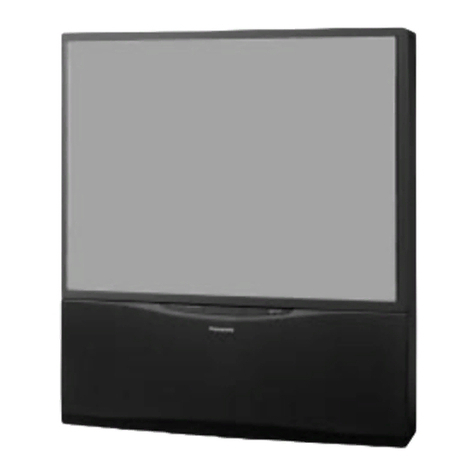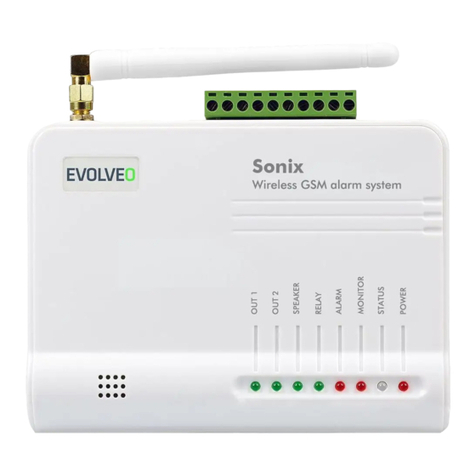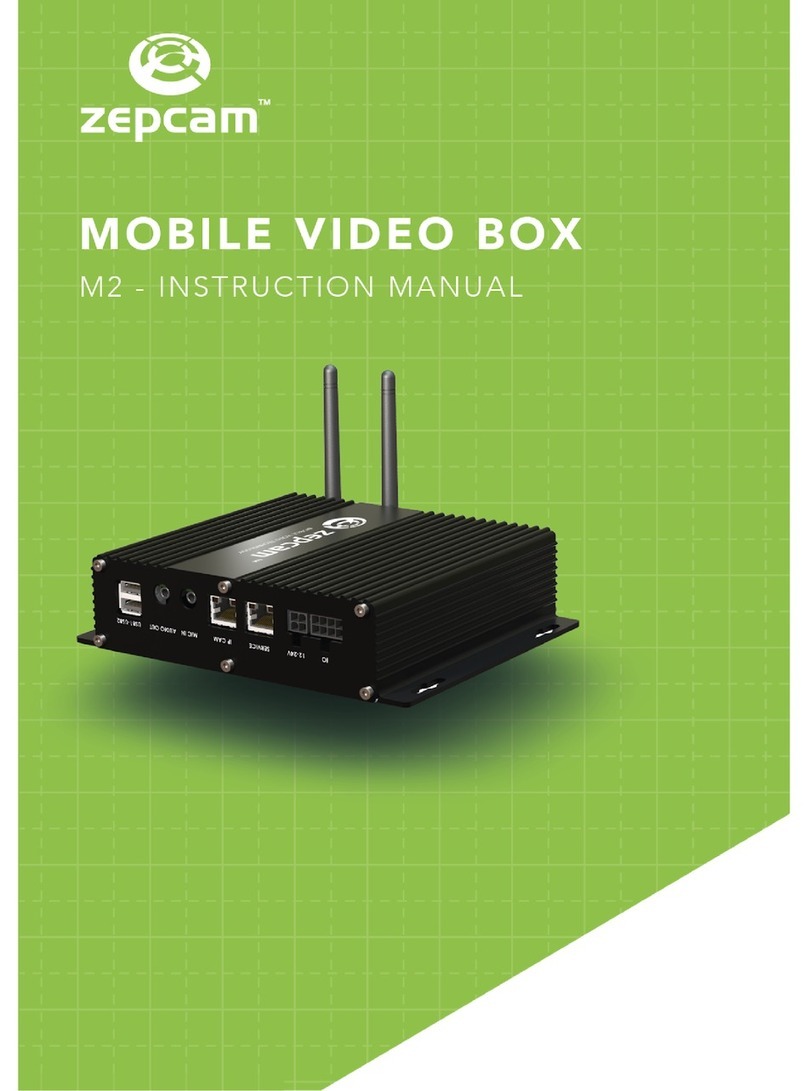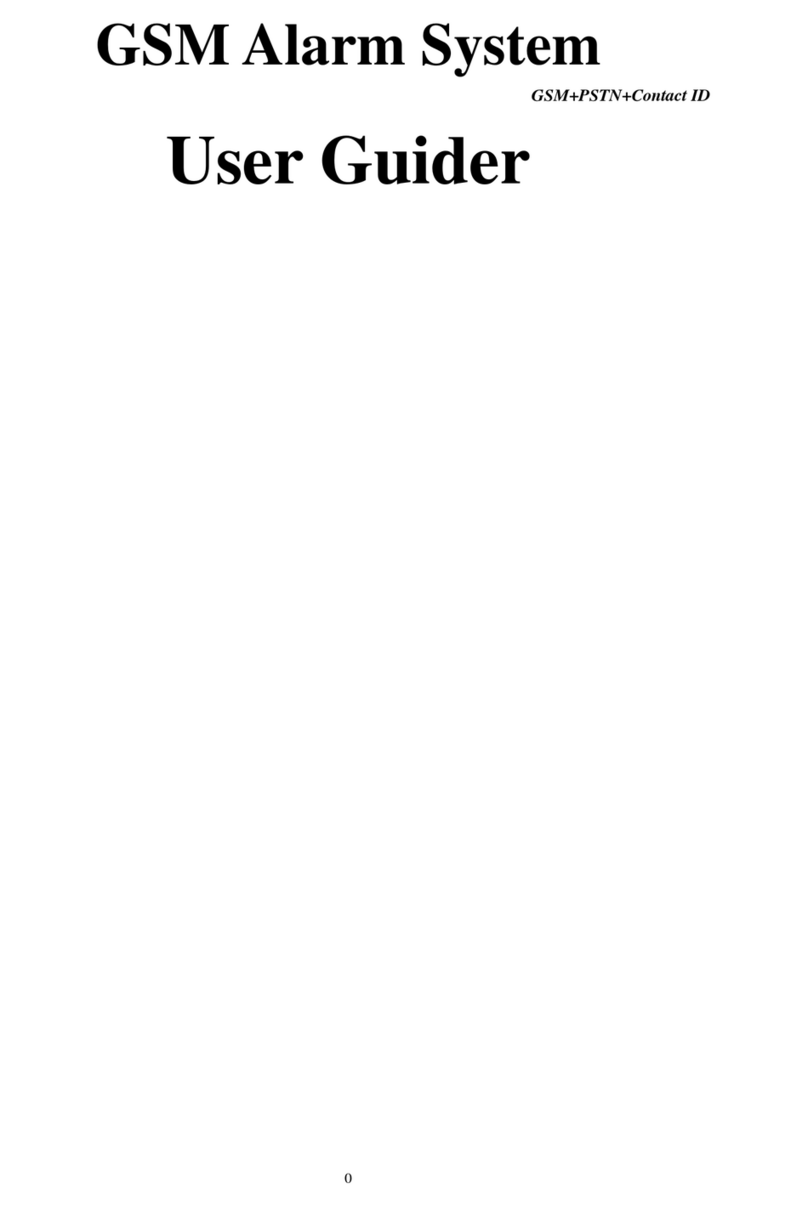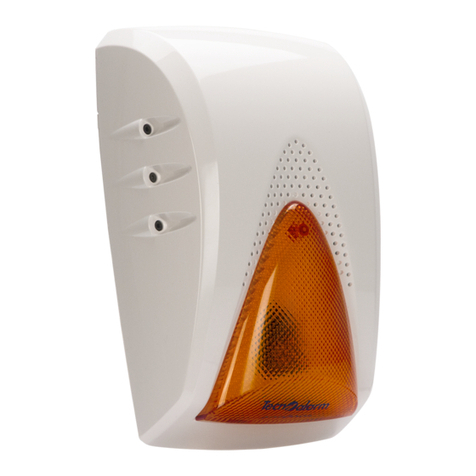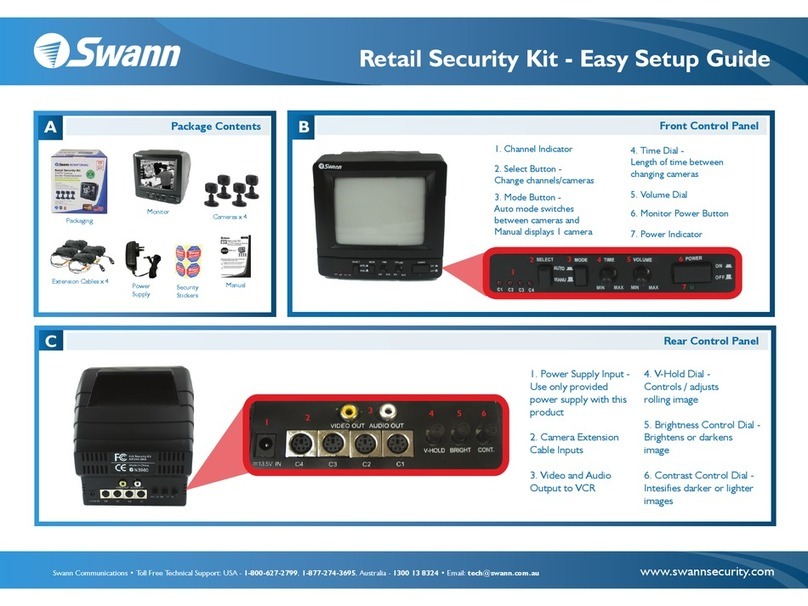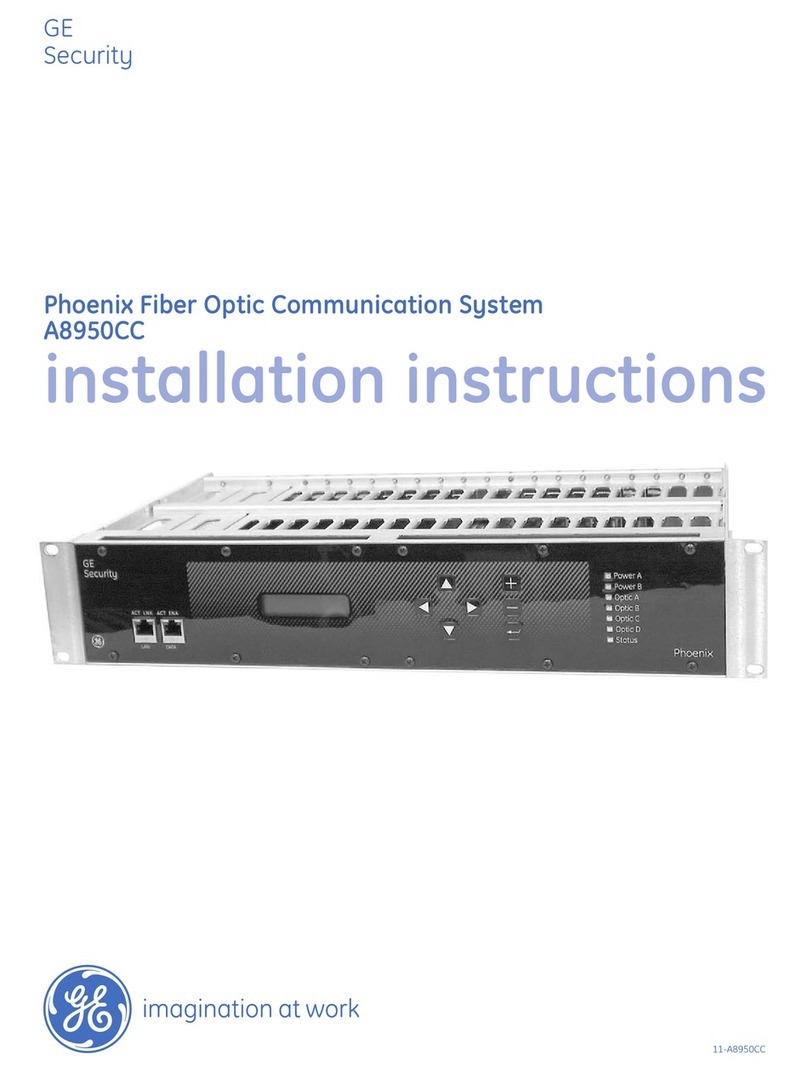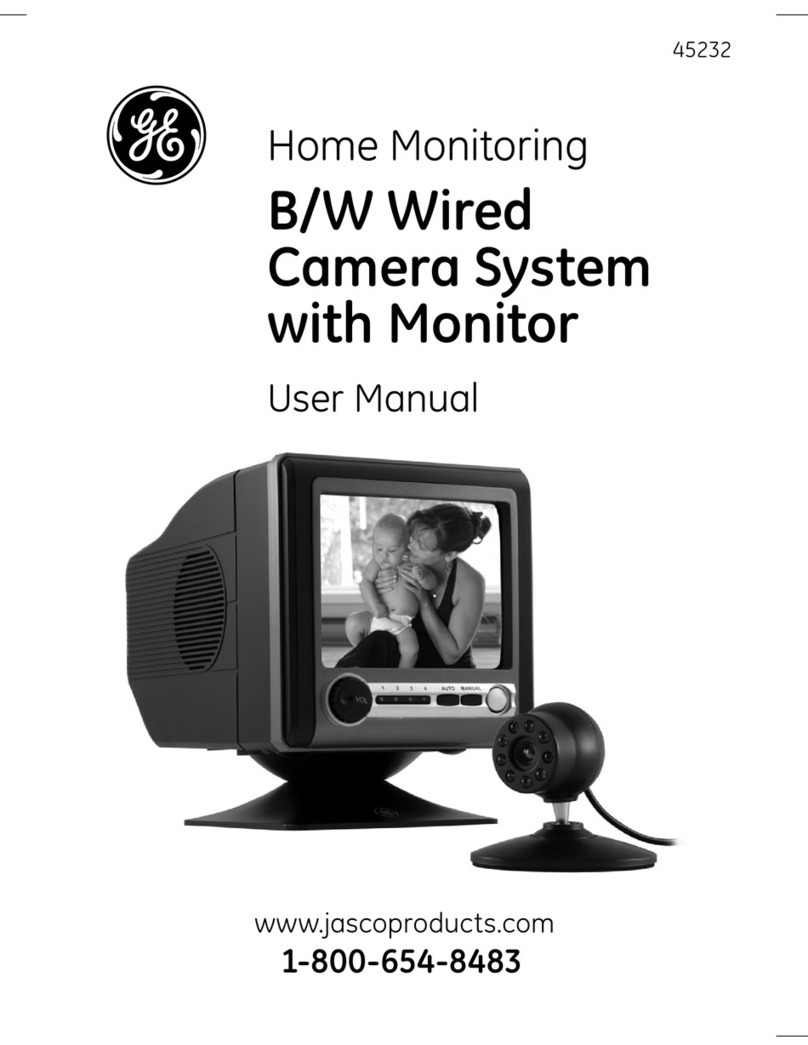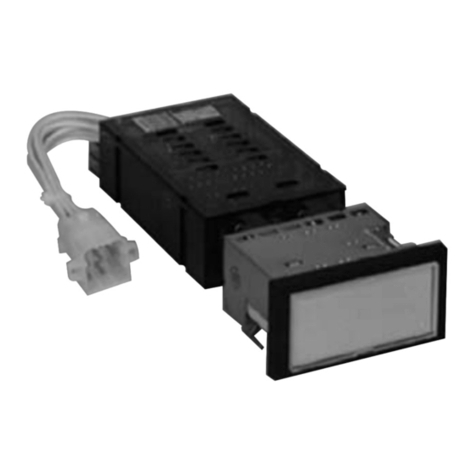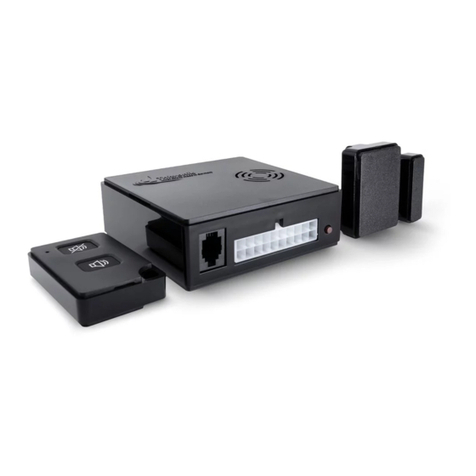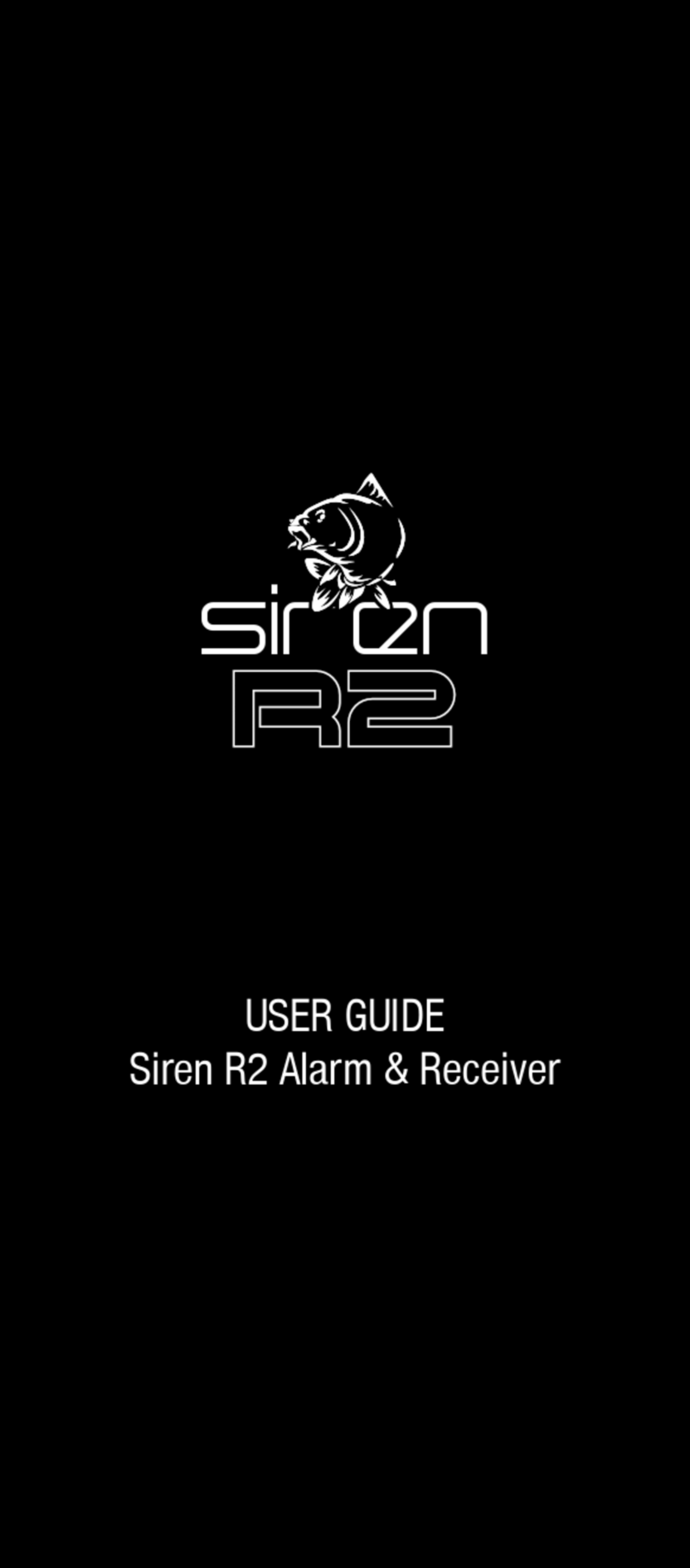ClearCube TEMPEST CD7724T-L2 Bundle Zero Client User manual

ClearCube Technology, Inc. 3700 W Parmer Lane Austin, Texas 78727 (512) 652-3500 www.clearcube.com
Zero Client Quick Start Guide
Package Contents CD7724T-L2 Zero Client Overview
A zero client is a remote computing device that connects a
user’s monitors, keyboard, mouse, speakers, and other
peripherals to remote ClearCube®PC blades (computers) and
to virtual desktops (VMs). As shown below, computing
resources are typically located in remote data centers. Zero
clients enable users to work on a blade or VM as if it is a local
PC. The connection between the zero client and the remote
device is over PCoIP®protocol. Inside the remote device, a
host card manages the PCoIP session.
Zero client connected to blade or to VM
Zero Client Features
ClearCube CD7724T-L2 zero clients connect to supported
ClearCube PC blades containing Tera1 or Tera2 host cards
and to virtual machines to provide:
•ThreeUSBports
• Support for fiber Ethernet media
• Support for independently-configurable monitors
– 2 DVI monitors up to 1920 × 1200
– 1 DVI monitor up to 2560 × 1600
(requires single-link-DVI-to-dual-link-DVI Y-cable
adapter, included, and Teradici Host Driver software)
• CD7724T-L2 TEMPEST zero client
• TEMPEST display
• TEMPEST keyboard and mouse
• Zero client power adapter and cable
• Y-cable adapter for single-link-to-dual-link DVI,
enabling single 2560 × 1600 display
•ThisQuick Start Guide
USB
Port
Power Button
and Indicator
Front
Smart Card Reader
Activity Indicator
PCoIP Session
Indicator
Microphone
Port
Smart Card
Reader
Headset
Port
DVI-I Connectors
USB
Ports
Ethernet
Connector
Audio
Out
MAC Address and
Serial Number Label
(on bottom)
Rear
AC
Input
Zero Client with Monitors
and Peripherals
Network Infrastructure
Chassis with
Blades and VMs
Ethernet Ethernet
CD7724T-L2 TEMPEST Bundle

ClearCube Technology, Inc. 3700 W Parmer Lane Austin, Texas 78727 (512) 652-3500 www.clearcube.com
G0200179 Rev A, 1.0.08.23.2014
Page 2 of 4
• PC–over–IP (PCoIP™) Tera2 processors, delivering PC
video, audio, and USB over an IP network
• Integrated smart card reader
• Headset and microphone ports
• Support for TEMPEST standards USA NSTISSAM-1-92
Level 2 and NATO SDIP-27 Level B (formerly AMSG 788A)
Client and Host Firmware Compatibility
ClearCube recommends using the same Teradici®firmware
version on PCoIP devices whenever possible.
• CD7724T-L2 zero clients include Tera2 processors,
requiring Teradici firmware 4.0.3 and higher.
• If Tera1 devices in a deployment connect to Tera2
devices, the Tera1 devices must use Teradici firmware
version 4.0.2.
• CD7724T-L2 zero clients do not support connection to
Tera1 quad devices.
See PC-over-IP System User’s Guide and PCoIP Firmware
Support and Compatibility Guide on the ClearCube Support
site for instructions about identifying and updating PCoIP
device firmware.
Buttons and Indicators
The list below shows indicators and front panel button
operations:
• Power Indicator Colors
–Green (solid): device is powered on.
–Green (blinking): PCoIP session is sleeping. Press
any key on the keyboard to wake the session.
–Orange: device is in low-power state and
wake-on-LAN (WoL) or wake-on-USB (WoUSB) is
enabled. ClearCube Sentral or third-party utilities can
provide WoL and WoUSB features for devices.
• Power Button Operations
–Power on: when indicator is orange, press briefly
(indicator turns green)
–Power off: press and hold for 3 seconds (indicator
turns orange)
While in session:
•when connected to a PCoIP host card, press to
display the Zero Client Control Panel (on monitor)
with options to disconnect or power down host
device. Press the power button repeatedly to scroll
through options or to cancel.
•when connected to a VM, press to disconnect.
•PCoIP Session Indicator—shows when a connection, or
session, is established between the zero client and a host.
The link indicator displays one of the following:
–Green—a session is established between the client
and a host.
–Off—there is no session between the client and a host.
• Smart Card Reader
–Yellow-Green—smart card reader is powered on.
–Red—smart card has been reset. When red light is
flashing, the IC Card is reading or writing.
Mandatory Setup and Cooling Requirements
• Ambient operating temperature: 0° to 35° C
(32° to 95° F).
• Do not stack any objects on top of the zero client or block
vents by placing papers, folders, computer speakers, or
any other objects on the vents.
• Ensure that adjacent furniture (file drawers, desk
supports, chairs) do not block or enclose the zero client.
• Do not place the zero client in enclosed environments
such as on a shelf or inside a drawer.
• Ensure that connected cables are adequately supported.

ClearCube Technology, Inc. 3700 W Parmer Lane Austin, Texas 78727 (512) 652-3500 www.clearcube.com
G0200179 Rev A, 1.0.08.23.2014
Page 3 of 4
Default Settings and Fallback IP Address
•DHCPenabled
• SLP discovery enabled
• Session type: direct to host + SLP discovery
• Fallback IP addresses:
–Zero client: 192.168.1.100
–Host card: 192.168.1.101
By default, zero clients and host cards are configured to
receive an IP address from a DHCP server. If a DHCP
server does not assign an address within a designated
timeout period (120 seconds by default), the zero client uses
a default, fallback IP address. Fallback addresses enable
devices to always have a known IP address. See PC-over-IP
System User’s Guide for more information.
Smart Card Reader Setup
Prevent ESD (electrostatic discharge) damage to
smart card readers by always discharging your
body and smart card before using a reader (for
example, by touching a grounded, unpainted,
metal object). ESD can vary depending on many
environmental conditions, including clothing that users wear
and how users handle smart cards. ESD damage can
potentially cause unsupported card reader behavior
including failure. Always perform ESD prevention steps
before using the card reader.
To use the smart card reader, you must install a driver for the
reader on the blade to which you connect and ensure that the
card reader service is running on the blade. Download the
driver to install on blades from the blade’s Drivers section of
ClearCube Support site. The download file contains drivers for
all supported operating systems and installation instructions.
Setting up a Zero Client
Perform the following steps to connect peripherals, a
network cable, and a power supply to the zero client. These
steps assume that the zero client and host card are on the
same network with a DHCP server.
1. Power on the remote PC blade or VM containing the host
card to which you are going to connect.
2. Connect a TEMPEST monitor cable to each port on the zero
client and to your monitors. For alternate configurations:
–To use a single monitor: enable the host driver
function on the peer host card and install Teradici
Host Driver software. See Tech Bulletin TB00274:
Configuring Dual-Monitor Systems for Single-
Monitor Use on ClearCube Support for information.
–To use 2560 × 1600 monitors: connect the included
dual-link DVI cable adapter (Y-cable) to the zero
client and to the monitor(s) as shown below.
Note indicators
1
and
2
on the Y-cable and connect them to the
corresponding connectors on the zero client.
3. Connect a network cable to the connector located on the
rear of the zero client, and then connect the other end of
the cable to the appropriate network infrastructure device
(such as a network switch, fiber transceiver, or router).
4. Connect a TEMPEST keyboard and a TEMPEST mouse to
the USB ports on the front or on the rear of the zero client.
5. Connect the AC power adapter to the power cable
(included with the zero client).
NOTE: If you use the fallback addresses and have DHCP
enabled, you must wait 120 seconds before you can
connect to a host. If you use the direct connect
methodology in your environment, ClearCube
recommends disabling the client's DHCP setting to
eliminate the need to wait 120 seconds before
connecting. See PC-over-IP System User’s Guide at
www.clearcube.com/support
for more information.
NOTE: You must install Teradici PCoIP Host Software, available
from ClearCube Support, on each host device to support
single-monitor use and to support 2560 × 1600 monitors.
1
2
1
2

ClearCube Technology, Inc. 3700 W Parmer Lane Austin, Texas 78727 (512) 652-3500 www.clearcube.com
G0200179 Rev A, 1.0.08.23.2014
Page 4 of 4
6. Connect the power adapter to the rear of the client, and
then plug the power cable into a power outlet. Ensure that
the zero client and the host card are on the same network.
See “Buttons and Indicators” for information about
powering the zero client on and off.
From your monitor, you can now click Connect and select
the host card to connect to from the list displayed on the
zero client’s on-screen display (OSD).
Configuration Steps and Additional Information
See PC-over-IP System User’s Guide and PCoIP Firmware
Support and Compatibility Guide at www.clearcube.com for
information about zero client deployment, configuration,
and administration. If you are using ClearCube Sentral in
your environment, see Sentral Administrator’s Guide for
information about connection brokering, device
administration, and more.
Web site: www.clearcube.com/support
Email: [email protected]
Toll-free: (866) 652-3400
Phone: (512) 652-3400
WEEE Disposal Guidelines
In the European Union, this electronic product is under European Directive (2002/96/EC) WEEE. When
this product reaches the end of its useful life or is no longer used, do not discard it with conventional
waste. Recycle this product at an approved, designated recycling or treatment facility. Check with local
authorities for proper disposal instructions. For assistance, contact
recycle@clearcube.com
.
